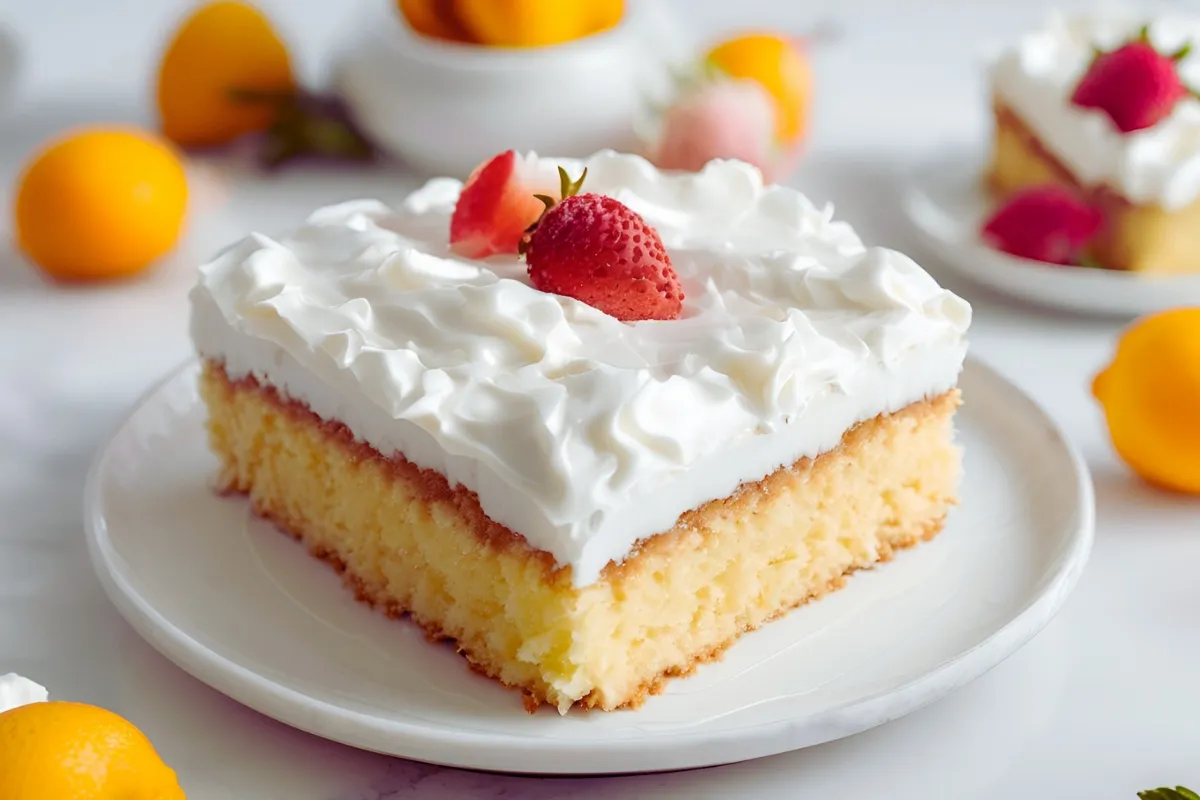When it comes to frostings, there’s something magical about 7 Minute Frosting. It’s light, fluffy, and shiny—almost like marshmallow clouds that melt in your mouth. Whether you’re new to baking or a seasoned pro, this frosting style has a way of taking your cakes and desserts to the next level (yes, even that box mix cake). Today, we’re diving into everything you need to know about 7 Minute Frosting, including its history, why you should try it, and all the must-have ingredients. Let’s get started!
What Is 7 Minute Frosting?
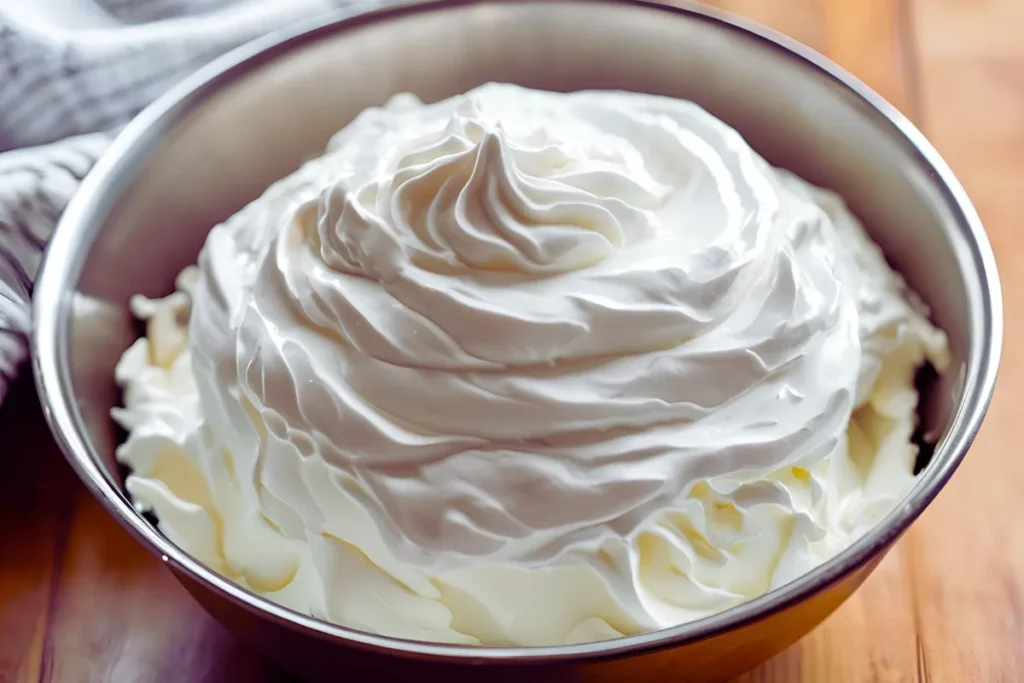
7 Minute Frosting is a meringue-based frosting that gets its name from the approximate time it takes to whip up this dreamy delight. It’s made using a combination of egg whites, sugar, water, and cream of tartar, all beaten together over simmering water until they form soft, glossy peaks. Think of it as the perfect blend of sweetness and fluffiness with a texture that’s light and airy but sturdy enough to frost even the most decadent layer cakes.
What makes it so unique? For starters, its marshmallow-like consistency and beautiful glossy finish are hard to beat. Plus, this frosting doesn’t rely on butter or heavy cream like buttercream does, making it a great option for lighter or dairy-free desserts.
The Origins of 7 Minute Frosting
The history of 7 Minute Frosting can be traced back to early 20th-century American kitchens. Back then, it was often referred to as “boiled frosting” due to the method of cooking the sugar syrup over a double boiler. The technique gained popularity for its simplicity and its ability to create a sophisticated, glossy finish with just a handful of ingredients.
Over the decades, it became a staple for home bakers and a go-to frosting for cakes like angel food, coconut, and even chocolate cakes. Its nostalgic charm and classic taste make it a favorite for anyone looking to recreate vintage recipes or whip up something timeless.
Key Features of This Frosting Style
What sets 7 Minute Frosting apart from other frosting types? Here are the key features:
- Glossy Finish: The shine is unmistakable, making your desserts look like they’re straight out of a bakery.
- Fluffy Texture: It’s almost like biting into a sweet cloud, thanks to its whipped meringue base.
- Quick to Make: While the name suggests seven minutes, the whole process, including prep, is usually done in under 15 minutes.
- Stable: Despite its light texture, this frosting holds up well on cakes and cupcakes.
Why Choose 7 Minute Frosting?
You might be wondering, why choose 7 Minute Frosting over other types like buttercream or cream cheese frosting? There are some seriously good reasons to give it a try.
Benefits of Using This Frosting
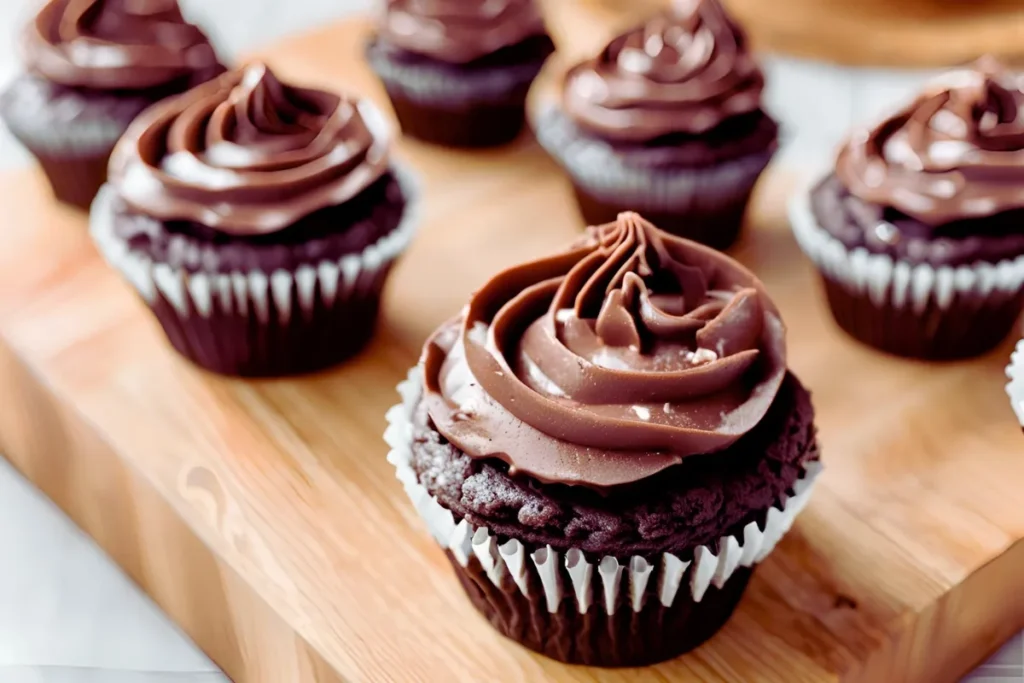
- Lighter Taste: Unlike butter-based frostings, this one isn’t overly rich or heavy. It’s sweet but balanced, letting the cake’s flavor shine through.
- Dairy-Free: Since there’s no butter or cream involved, it’s naturally free of dairy, making it a great choice for those with dietary restrictions. For more information on dairy-free diets and options, check out this resource from Healthline.
- Easy to Make: Despite its fancy appearance, the steps are super straightforward, and the ingredients are likely already in your pantry.
- Low Fat: Because it’s made mostly of egg whites and sugar, it’s a lighter option compared to traditional frostings.
Popular Uses for Cakes and Desserts
7 Minute Frosting is incredibly versatile. Here are just a few ways you can use it:
- Angel Food Cake: Its light texture pairs perfectly with the airy sponge of angel food cake.
- Coconut Cake: Spread it on a classic coconut cake and sprinkle shredded coconut on top for a stunning dessert.
- Chocolate Cupcakes: Pipe the frosting onto chocolate cupcakes for a fun contrast of flavors.
- Decorative Desserts: Its glossy appearance makes it ideal for creating peaks, swirls, or even toasted edges with a kitchen torch.
Key Ingredients for 7 Minute Frosting
Let’s break down what you’ll need to whip up this frosting and explore some options for dietary tweaks.
Common Pantry Staples Needed
The beauty of 7 Minute Frosting lies in its simplicity. Most of the ingredients are probably already sitting in your kitchen:
- Egg Whites: The star of the show, providing the fluffy meringue base.
- Granulated Sugar: Adds sweetness and structure to the frosting.
- Water: Helps dissolve the sugar and creates the syrupy base.
- Cream of Tartar: Stabilizes the egg whites for those perfect peaks.
- Vanilla Extract: Adds a touch of flavor (or swap for other extracts if you’re feeling adventurous).
Alternative Ingredients for Dietary Restrictions
If you or someone you’re baking for has dietary restrictions, here are some swaps:
- Egg White Alternatives: Use aquafaba (the liquid from a can of chickpeas) for a vegan option.
- Sugar Substitutes: Swap granulated sugar with a low-carb sweetener like erythritol for a keto-friendly version.
- Flavor Variations: Experiment with almond, lemon, or even peppermint extract to mix things up.
7 Minute Frosting is a true classic for a reason. With its glossy finish, light texture, and ability to elevate any dessert, it’s hard not to fall in love with this recipe. And don’t worry—we’ve got step-by-step instructions and tips coming up to help you nail it on the first try.
Step-by-Step Instructions for Making 7 Minute Frosting
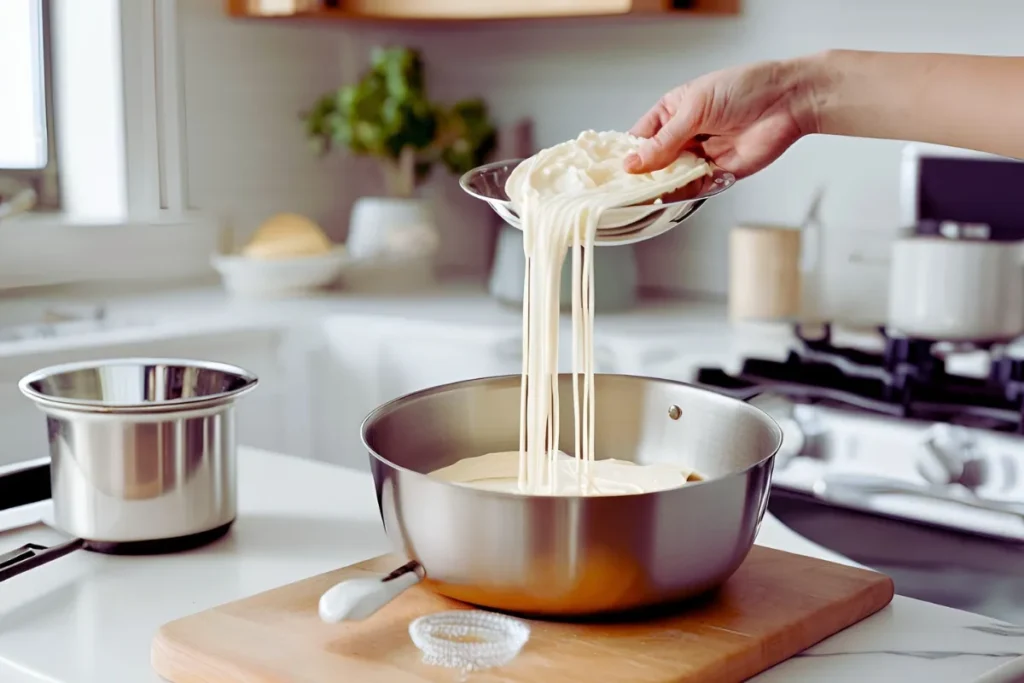
Making 7 Minute Frosting is easier than you might think, especially when you break it down step by step. Below, we’ll guide you through preparing the ingredients, whipping the frosting to perfection, and troubleshooting common issues so you can master this timeless recipe. Let’s get whisking!
Preparing the Ingredients
Before you begin, gather everything you need and ensure your tools are clean and grease-free. Any oil or grease can interfere with the egg whites’ ability to whip properly.
Here’s what you’ll need:
- 2 large egg whites (room temperature)
- 1 ½ cups granulated sugar
- ¼ cup water
- ¼ teaspoon cream of tartar
- 1 teaspoon vanilla extract
Pro Tip: Room-temperature egg whites whip faster and yield a better volume. To bring them to room temp quickly, place the eggs in a bowl of warm water for a few minutes.
The Process of Whipping the Frosting
- Set Up a Double Boiler: Combine the egg whites, sugar, water, and cream of tartar in a heatproof bowl (preferably stainless steel). Place the bowl over a saucepan of simmering water, ensuring the bottom doesn’t touch the water.
- Whisk While Heating: Using a hand whisk, continuously stir the mixture while it heats. This step dissolves the sugar and brings the egg whites up to a safe temperature. You’ll know it’s ready when the mixture feels warm to the touch, and you can’t feel sugar granules between your fingers.
- Beat It Up: Remove the bowl from the heat and start whipping with an electric mixer on high speed. Watch as the frosting transforms from a foamy liquid to a thick, glossy meringue.
Achieving the Right Consistency
The goal is to achieve stiff, glossy peaks that hold their shape when you lift the beaters. This usually takes about 7–10 minutes, depending on your mixer’s power. If the frosting still feels runny, keep whipping until you get those iconic peaks.
Tips for Perfect Results Every Time
- Keep Things Clean: Any grease or egg yolk in the mixture will prevent the frosting from whipping up properly.
- Avoid Overheating: When heating the mixture over the double boiler, ensure it’s warm but not too hot. Overcooking the egg whites can lead to grainy frosting.
- Use Fresh Ingredients: Older egg whites or stale sugar can impact the final texture and stability.
Common Issues and Troubleshooting
Even the best bakers run into hiccups now and then. If your 7 Minute Frosting isn’t turning out as planned, here’s how to fix common problems.
Why Is My 7 Minute Frosting Not Thickening?
If your frosting remains thin or runny, there are a few potential culprits:
- Undissolved Sugar: If the sugar wasn’t fully dissolved during the heating process, it can prevent the frosting from whipping up properly.
- Egg Whites Not Whipped Enough: Sometimes, the frosting just needs more time under the mixer to reach stiff peaks.
Causes and Solutions
- Cause: Sugar crystals in the mixture.
Solution: Ensure you whisk the mixture thoroughly over the double boiler until smooth before whipping. - Cause: Low-quality egg whites.
Solution: Use fresh, high-quality eggs for the best results.
How to Salvage Runny Frosting
If your frosting is still runny after whipping, don’t panic! Place the bowl back over the double boiler for a few minutes while continuing to whip. The heat can help stabilize the mixture and create the glossy peaks you’re looking for.
How to Avoid Sugar Crystals in Frosting
Sugar crystals can ruin the texture of your frosting, making it grainy instead of smooth. To avoid this, make sure to:
- Use fine-grain sugar, which dissolves more easily.
- Continuously whisk the mixture while it heats to ensure even cooking.
- Avoid splashing sugar onto the sides of the bowl, as it can recrystallize and fall back into the frosting.
How 7 Minute Frosting Compares to Other Frosting Types
If you’re wondering how 7 Minute Frosting stacks up against other frostings, let’s break it down.
Frosting vs. Icing: What’s the Difference?
While frosting and icing are often used interchangeably, they’re not quite the same. Here’s a quick comparison:
| Feature | Frosting | Icing |
|---|---|---|
| Texture | Thick and fluffy | Thin and smooth |
| Primary Use | Layer cakes, cupcakes | Cookies, glazed desserts |
| Key Ingredient | Egg whites (7 Minute Frosting) | Powdered sugar and water |
Is Italian Meringue the Same as 7 Minute Frosting?
While they’re similar, there are a few key differences:
- Similarities: Both are meringue-based and require whipping egg whites to create a fluffy texture.
- Differences: Italian meringue involves boiling sugar syrup to a specific temperature and pouring it into whipped egg whites. In contrast, 7 Minute Frosting cooks the egg whites and sugar together over a double boiler.
Similarities and Key Differences
Italian meringue is more stable and commonly used for macarons and fancy desserts. On the other hand, 7 Minute Frosting is easier to make and perfect for everyday cakes and cupcakes.
Now that you know how to whip up this frosting and troubleshoot any hiccups, you’re ready to tackle the kitchen with confidence! Next up, we’ll explore creative ways to use 7 Minute Frosting and how to store it for best results.
Using 7 Minute Frosting in Your Baking Projects
Now that you’ve mastered the art of making 7 Minute Frosting, it’s time to put it to good use! This frosting is more than just a pretty topping—it’s a versatile, crowd-pleasing addition to cakes, cupcakes, cookies, and beyond. In this section, we’ll dive into some creative ways to incorporate this classic frosting into your baking, as well as tips for storage and shelf life.
Creative Cakes and Desserts Featuring 7 Minute Frosting
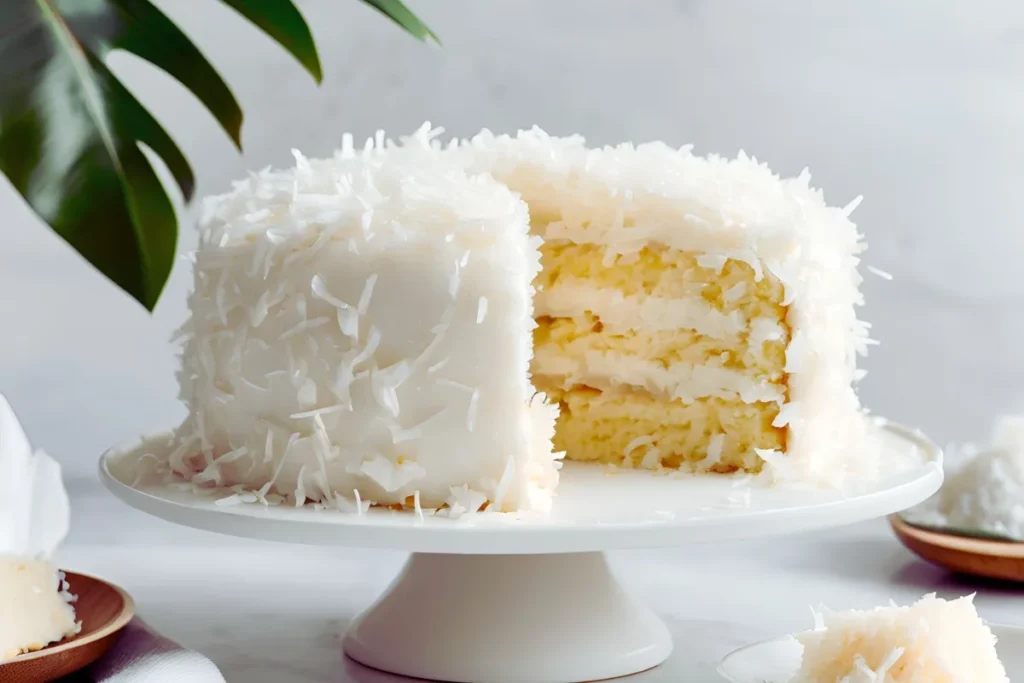
The beauty of 7 Minute Frosting is that it’s adaptable to so many different desserts. Whether you’re a fan of traditional layer cakes or looking for something more playful, there’s no shortage of inspiration.
Traditional Layer Cakes
This frosting has long been a favorite for layer cakes, thanks to its glossy finish and fluffy texture. Here’s how you can make your cake stand out:
- Coconut Cake: Spread the frosting generously between layers and all over the outside. Then, press shredded coconut into the frosting for a snow-white, bakery-worthy look.
- Chocolate Cake: The sweetness of 7 Minute Frosting pairs beautifully with rich, moist chocolate cake. Bonus points if you sprinkle chocolate shavings on top for a bit of contrast.
- Lemon Cake: The lightness of the frosting is perfect for a citrusy dessert. Add a hint of lemon zest to the frosting for a bright, zippy finish.
Cupcakes, Cookies, and Beyond
Who says frosting is only for cakes? Here are a few other creative ways to use it:
- Cupcakes: Pipe tall swirls of frosting onto cupcakes, then toast the tips with a kitchen torch for a s’mores-like effect.
- Cookies: Spread it on sugar cookies or use it to sandwich two cookies together for a fluffy filling.
- Pies: Use it as a topping for pies like chocolate cream or key lime, and toast the peaks for a dramatic effect.
Do Cakes with 7 Minute Frosting Need Refrigeration?
One of the most common questions about 7 Minute Frosting is how to store it. Since it’s made with egg whites, proper storage is essential for keeping it fresh and safe to eat.
Storage Tips for Frosted Desserts
- Short-Term Storage: If you’re serving the dessert within a day or two, you can leave it at room temperature in a cool, dry place. Just make sure to keep it covered to prevent the frosting from drying out.
- Refrigeration: For longer storage, place the frosted dessert in an airtight container and refrigerate it. The frosting holds up well in the fridge for up to 3 days.
- Avoid Humidity: Humidity can cause the frosting to lose its fluffy texture, so try to store it in a low-humidity environment.
How Long Does 7 Minute Frosting Last?
While this frosting is stable for a short period, it’s best enjoyed fresh. Here’s a quick breakdown of its shelf life:
- Room Temperature: Up to 2 days.
- Refrigerated: 3 days max.
- Freezing: Not recommended, as the texture may break down when thawed.
Pro Tip: If you notice the frosting starting to separate or lose its fluffiness, give it a quick whisk to bring it back to life.
Final Thoughts on 7 Minute Frosting
As we wrap up this ultimate guide, let’s take a moment to appreciate why 7 Minute Frosting has stood the test of time. It’s a nostalgic treat with a flavor and texture that never go out of style.
Why It’s a Classic Choice for Bakers
From its simple ingredients to its elegant finish, 7 Minute Frosting checks all the boxes for a versatile and reliable frosting. It’s perfect for anyone who loves baking but doesn’t want to fuss with complicated techniques. Plus, its ability to complement so many different flavors makes it a go-to for bakers of all skill levels.
Encouragement to Try the Recipe at Home
If you’ve never made 7 Minute Frosting before, there’s no better time to start. Grab your mixer, fire up the double boiler, and watch the magic happen. Whether you’re topping a cake, swirling it onto cupcakes, or simply eating it by the spoonful (no judgment here), you’re in for a treat.
Now that you’ve got a solid understanding of how to use and store 7 Minute Frosting, you’re officially ready to get baking! Up next, we’ll tackle some frequently asked questions to cover any lingering doubts or curiosities.
FAQs About 7 Minute Frosting
1. Does Cake with 7 Minute Frosting Need to Be Refrigerated?
Cakes frosted with 7 Minute Frosting don’t always require refrigeration if they’ll be served within 1–2 days and kept in a cool, dry place. However, if the temperature is warm or humid, or if the cake needs to be stored longer, refrigeration is recommended to maintain freshness. Cover the cake with an airtight lid or wrap it gently with plastic wrap to prevent the frosting from drying out.
2. Why Is My 7 Minute Frosting Not Thickening?
If your frosting isn’t thickening, it’s often because the sugar wasn’t fully dissolved during the heating process or the egg whites didn’t reach the right temperature. To fix this, you can return the mixture to the double boiler and continue whisking until it’s warm and glossy. Additionally, ensure your mixing bowl and utensils are grease-free, as any oil can prevent the egg whites from whipping up properly.
3. What Is the Difference Between Frosting and Icing Recipes?
Frosting is thick, fluffy, and spreadable, while icing is thinner and often used for glazing. For example, 7 Minute Frosting has a meringue-like consistency that’s perfect for cakes and cupcakes, whereas icing is typically poured over cookies or bundt cakes for a smooth, shiny finish. Both have their unique uses, but frosting is usually the go-to choice for layering and decorating.
4. Is Italian Meringue the Same as 7 Minute Frosting?
Not exactly! Although both are meringue-based, the preparation methods differ. Italian meringue involves boiling sugar syrup to a specific temperature and slowly adding it to whipped egg whites, making it slightly more stable. On the other hand, 7 Minute Frosting is cooked over a double boiler, making it quicker and easier to prepare for everyday desserts. Both have a similar texture, but 7 Minute Frosting is often favored for its simplicity.
5. Can 7 Minute Frosting Be Made Ahead of Time?
While it’s best to use 7 Minute Frosting right after making it, you can store it for up to 1–2 days. However, the texture may slightly deflate over time. If you do store it, keep it in an airtight container at room temperature and give it a quick whisk before using it again. For the best results, plan to frost your cakes or desserts as soon as the frosting is ready.
6. What Are the Best Tools for Making 7 Minute Frosting?
The most important tools include a heatproof mixing bowl (stainless steel works best), a saucepan for the double boiler, and an electric hand or stand mixer for whipping the frosting. Additionally, a silicone spatula is helpful for scraping down the sides of the bowl. If you’re planning to decorate, a piping bag with a decorative tip can add that extra touch of elegance.
7. Is 7 Minute Frosting Safe for Outdoor Events?
Yes, but with some precautions. While 7 Minute Frosting is stable for a few hours, exposure to heat and humidity can cause it to lose its fluffy texture. For outdoor events, try to keep desserts in a shaded, cool area and serve them as soon as possible. If the weather is particularly hot, consider refrigerating the frosted desserts until just before serving.

